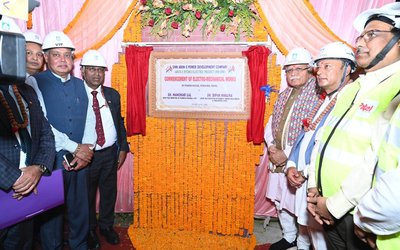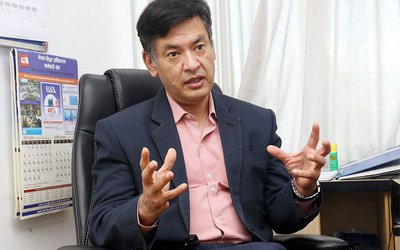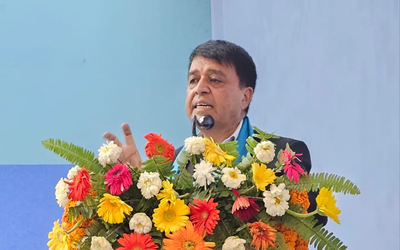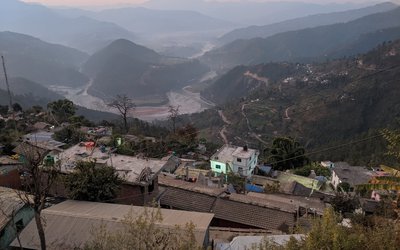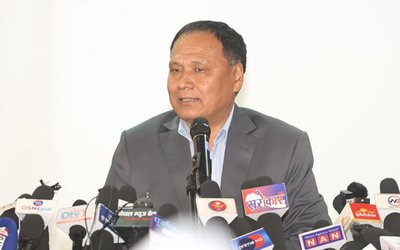
As a number of hydropower projects are under construction in the Trishuli river basin, they have also created obstructions to livelihood of the people and caused environmental damage.
Given such a situation, IFC, a member of the World Bank Group, has released the recommendations of its Cumulative Impact Assessment (CIA) of the Trishuli River Basin (TRB), which calls for setting up of a Trishuli Hydropower Developers’ Forum (THDF) to minimize the adverse impacts of hydropower development on TRB’s ecosystem and its people.
A study report published by IFC warns that, if no management measures at TRB are implemented, there is also likely to be an increase in sand-mining activities while exacerbating the displacement impacts associated with land-acquisition.
“If all the projects currently planned for the TRB materialize, it would require at least 640 hectares of land,” said a study.
The year-long study, Cumulative Impact Assessment and Management: Hydropower Development in Trishuli River Basin in Nepal, which was supported by the governments of Australia, Norway and Japan, recommends a holistic and basin-wide approach to address environmental and social challenges associated with infrastructure development. There are over 36 hydropower projects in various stages of development or planning in the TRB, which covers an area of 32,000 square kilometers.
The study found the TRB is already impacted by hydropower and other development projects, with the effects compounded by other stresses such as climate change, slope instability, sand mining and urbanization. It shows that, without action, the river and its fish could be seriously, to critically, affected, with adverse impacts on people’s livelihoods and the future of the already globally endangered Golden Mahseer. It also warns that, if no management measures at TRB are implemented, there is also likely to be an increase in sand-mining activities while exacerbating the displacement impacts associated with land-acquisition. If all the projects currently planned for the TRB materialize, it would require at least 640 hectares of land.
“In the absence of a basin-wide environmental and social approach, individual efforts at the project-level to mitigate impacts will likely fall short and as a result biodiversity, people’s livelihoods and ecosystem services could be significantly impacted,” said Pablo Cardinale, Global Environmental and Social Hydropower Lead of IFC. “This assessment is part of IFC’s deep commitment to promote a holistic, beyond-individual-projects’, approach to environmental and social risk management practices in Nepal, with the clear aim to minimize any accumulated harm to the environment and communities through multiple development projects in the same river basin.”
The study recommends the proposed Trishuli Hydropower Developers’ Forum to include developers, lenders, the Nepal Electricity Authority, environmental and social regulators, and other relevant government agencies. Under the recommended high management scenario, hydropower developers across the basin would need to sign on to a cumulative impacts management charter that goes beyond the usual compliance requirements of environmental and social management plans of individual hydropower projects.
“The importance of hydropower for Nepal cannot be overstated and the country truly has the potential to be the next regional powerhouse,” said Wendy Werner, IFC’s Country Manager for Nepal, Bhutan and Bangladesh. “But to exploit the natural endowments without taking a bird’s-eye-view of the potential negative consequences throughout the entire river basin could do more harm than good in the long-run. And for that reason, all of us have to work together to understand and mitigate cumulative impacts from multiple projects to ensure a sustainable development pathway for the energy sector in Nepal.”
The study was an integral part of the World Bank Group Board of Directors’ approval of the $650 million 216 MW Upper Trishuli-1 Hydropower Project (UT-1), located in the upstream of the Trishuli basin. IFC is leading a consortium of eight international lenders in financing UT-1. High environmental and social standards have been put in place for UT-1 and it is the first project in Nepal to undertake a consent process with affected indigenous communities.
As one of the follow-ups to the CIA recommendations, IFC and partners have already developed an assessment tool to monitor biodiversity across the basin and train Nepali researchers in novel field techniques such as environmental DNA (eDNA).
IFC’s study comes against the backdrop of an evolving regulatory and administrative framework on water resources management, sustainable hydropower development, and decentralization. The Nepal Water and Energy Commission Secretariat, with support from the World Bank Group, is in the process of developing river basin plans across major rivers, including the Gandaki Basin.
As a part of its advisory services, IFC is working with the Ministry of Forest and Environment to produce a hydropower sector specific Environment Impact Assessment Manual, and is also in the process of building capacity at the federal and provincial levels. IFC has also been supporting the hydropower sector through the Independent Power Producers Association of Nepal (IPPAN).
- TEACHERS ON STRIKE: Students' Future In Jeopardy
- Apr 25, 2025
- NEPAL-THAILAND: Joint Business Council
- Apr 13, 2025
- BIMSTEC SUMMIT: Nepal’s Stand
- Apr 11, 2025
- IME GROUP: Expands Into Paper Industry
- Mar 24, 2025
- CPN UML: Instigated By India
- Mar 23, 2025
